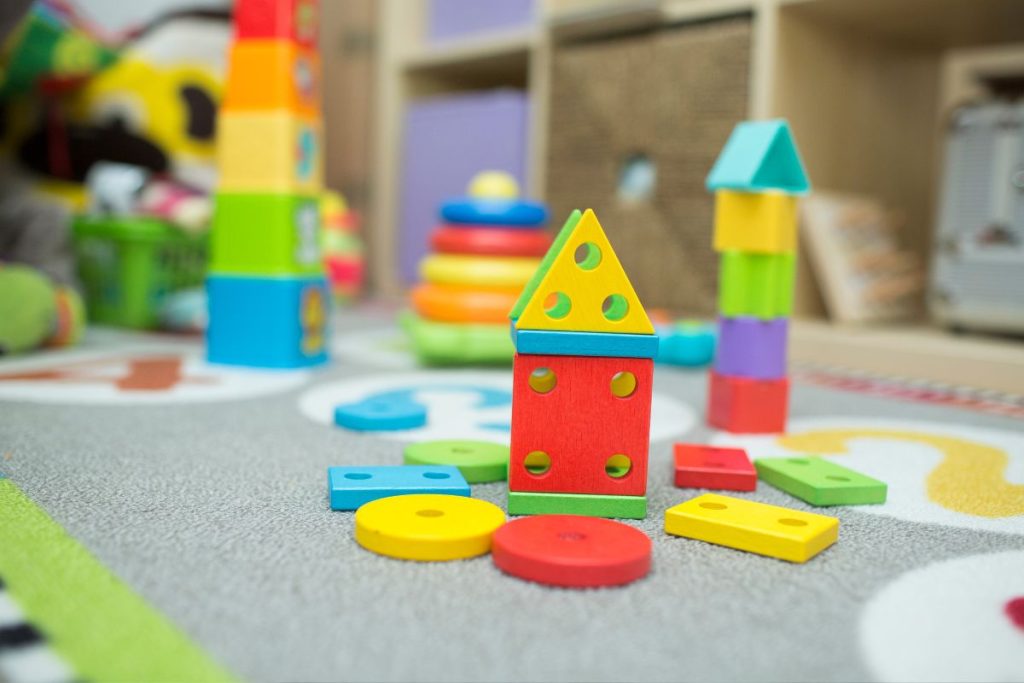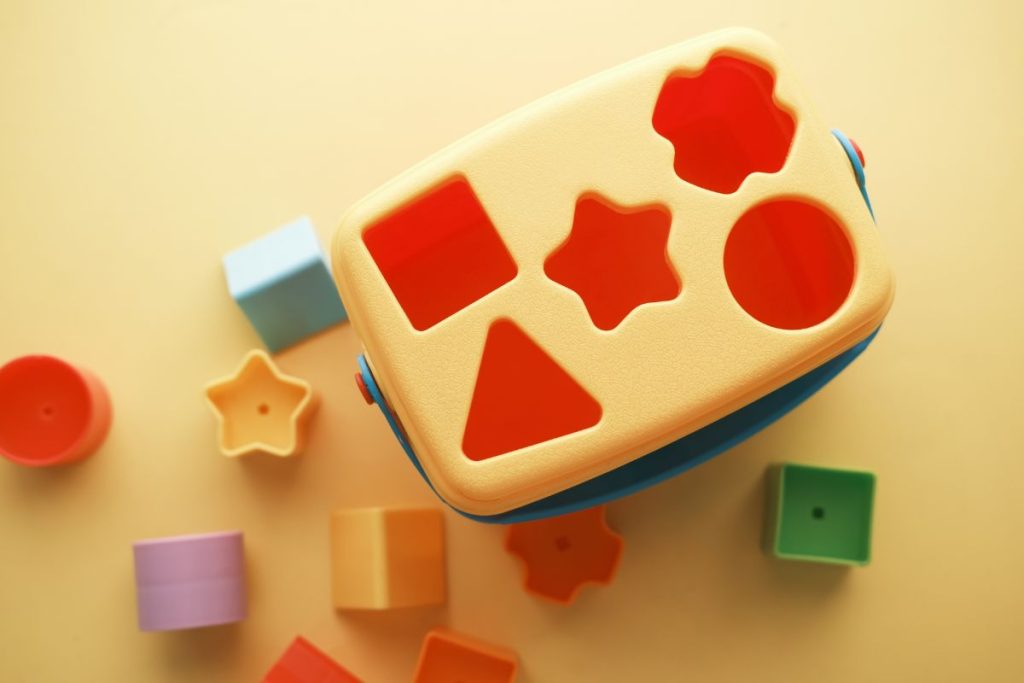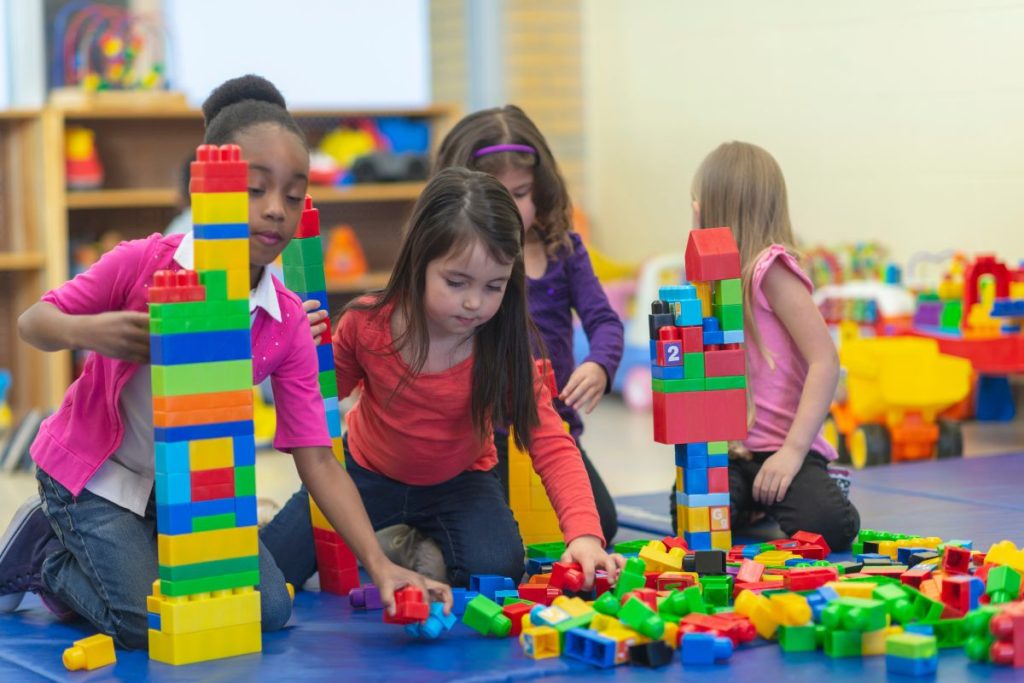Introducing shapes to toddlers is more than just an early learning activity; it’s a fundamental part of their cognitive development. This seemingly simple task lays the foundation for later learning in areas such as math, spatial reasoning, and even language skills. Think about it, have you ever noticed how often we use shapes to describe our world? From a “round” ball to a “square” box, shapes are embedded in our everyday language and understanding. Teaching shapes to toddlers can help them make sense of the world around them, setting them up for a lifelong love of learning. Quite simply, recognizing and understanding shapes is a vital skill, and the sooner we start teaching, the better.
The Role of Shapes in Cognitive Development

Foundation for reading, writing and math
Shapes form the bedrock of many key areas of learning. For instance, consider the role of shapes in reading and writing. A toddler who can identify simple shapes is more equipped to distinguish the differences between letters of the alphabet. The curves and lines of letters are essentially a mix of shapes. Recognizing these can help children with their letter formation and reading skills.
Take the letter ‘O’ and ‘H’ for example. The letter ‘O’ is a perfect example of a circle, and ‘H’ represents parallel lines and perpendicular lines. Learning to identify these shapes aids in the process of learning to read and write these letters.
Equally important is the role of shapes in mathematics. Before children grasp the concept of numbers, they often learn about shapes. Understanding the properties of shapes, like the number of sides or corners, is a rudimentary form of math. It’s fascinating to see how a simple square or triangle can introduce concepts like symmetry and geometry.
Interpret the world
Beyond these academic skills, understanding shapes also helps toddlers make sense of their world. Shapes are everywhere; they form the basis of objects both natural and man-made. A toddler who is familiar with shapes can better interpret and interact with their surroundings. A square window, a circular wheel, a triangular slice of pizza – everywhere they look, they’ll see shapes. This not only enriches their experiences but also helps develop their spatial reasoning skills.
Techniques to Teach Shapes to Toddlers
Incorporating shapes into everyday life.
An effective approach to teaching shapes is to incorporate them into everyday activities. For instance, during mealtime, you can use food items to illustrate different shapes. A circular biscuit, a square piece of toast, or a triangular slice of watermelon can all serve as great examples. This makes learning interactive and fun, and simultaneously emphasizes the relevance of shapes in their daily life.
Another easy method is to use shape-themed toys or puzzles. Simple games that involve fitting different shaped blocks into corresponding holes can do wonders in teaching shape recognition. Not only do they engage your child’s attention, they also enhance their hand-eye coordination and problem-solving skills.

Don’t forget about the power of books. There are numerous children’s books available that are centered around shapes. Reading these books together can be a wonderful bonding experience, while also subtly teaching them about shapes.
Remember, the key is to make learning shapes a fun and engaging experience for your toddler. The more they enjoy the process, the more effectively they will learn.
Fun Games to Teach Shapes to Toddlers
One of the most effective ways to help toddlers learn and remember shapes is to turn it into a fun game. Here are a few simple, age-appropriate games that can make learning shapes a joyful experience for toddlers:
The Shape Hunt Game: This involves turning your home or a room into a “shape safari”. You can ask your child to find items in the room that match a certain shape. For example, “Can you find something round like a ball?” or “Find something that is square like this picture frame.” This interactive game not only keeps them engaged but also helps them associate shapes with everyday objects.
Shape Sorting: For this game, you can use shape sorter toys or even DIY with cardboard and colored papers. Cut out different shapes and ask your toddler to sort them into matching slots. This activity helps reinforce shape recognition and also enhances their motor skills.
Crafting with Shapes: Crafts are always a hit with toddlers. You can introduce shapes through fun and simple craft projects. For example, you can cut out triangles, circles, squares, and rectangles from colored paper and ask your toddler to stick them on a blank paper to create a picture. This not only familiarizes them with different shapes but also sparks their creativity.
Shape Dancing: This is a fun physical activity where you can call out a shape, and your child has to make that shape with their body or with a prop. For instance, they can form a circle with their arms or make a square with their feet and hands. This game is a great way to teach shapes and get some physical exercise at the same time.
Remember, the goal is not just to teach shapes but to make the learning process enjoyable. So, keep it light, keep it fun, and watch your little one learn and grow!
Resources and tools for teaching shapes
Utilizing Digital Tools
Teaching shapes to toddlers is now easier thanks to a plethora of digital resources that are both educational and entertaining. For example, educational apps like ‘Elmo Loves 123s’ offer a great way to introduce shapes and numbers. They feature interactive games, videos, and coloring pages that hold your child’s attention while they learn.
Learning through Television Shows
Consider popular educational television shows like ‘Peppa Pig’ or ‘Bluey’. These shows cleverly incorporate shapes into their storytelling, subtly teaching as they entertain. For instance, in one episode of ‘Peppa Pig’, George learns about shapes when they start making pizza. He learns that the pizza dough is a circle, the pizza box is a square, and the slices are triangles.
Shape-themed Songs and Rhymes
Who doesn’t love a catchy tune? Songs and rhymes are a fantastic teaching tool, especially when it comes to toddlers. You can find numerous shape-themed songs and rhymes online. These songs introduce shapes and their properties in a melodic and rhythmic manner, making it easier for toddlers to remember. A classic example is ‘The Shape Song’ by Super Simple Songs, which introduces the circle, square, and triangle in a fun and catchy way.
The Impact of Teaching Shapes to Toddlers

Improved problem-solving skills.
Teaching shapes to toddlers significantly improves their problem-solving skills. As they learn to identify and differentiate between shapes, they start developing the ability to analyze and compare different objects and their properties. This enhances their critical thinking and reasoning abilities, skills that are crucial for solving problems.
Moreover, understanding shapes lays the foundation for more advanced mathematical concepts. For example, recognizing a square as a shape with four equal sides and four right angles is an early introduction to the concepts of equality and angles. Consequently, this early shape recognition prepares them for more advanced geometry and symmetry lessons as they grow older.
Enhanced creativity and spatial awareness.
Understanding shapes can also significantly enhance a toddler’s creativity and spatial awareness. As children start recognizing different shapes, they begin to see these shapes in everything around them. They start to understand that a house is essentially a rectangle with a triangle on top, a tree can be represented as a circle on top of a rectangle, and so on. This ability to break complex objects into simple shapes fosters creativity and aids in their drawing and art skills.
Furthermore, recognizing and differentiating between shapes helps toddlers develop spatial awareness. For instance, when a toddler recognizes that a square block won’t fit in a round hole, they are essentially understanding the concept of space. This understanding of how shapes fit together is critical for developing spatial skills, which are key in many day-to-day activities and in scientific and artistic pursuits.
Preparation for future learning.
Recognizing shapes is a fundamental aspect of a toddler’s development and serves as a building block for future learning. Toddlers who are familiar with shapes can find it easier to identify letters and numbers, which are essentially combinations of different shapes. For instance, the letter ‘A’ is formed by two diagonal lines meeting at a point (like an upside down ‘V’), and a horizontal line connecting the two diagonal lines – all basic shapes. This understanding can therefore play a crucial role in enhancing their reading and numerical skills.
Moreover, teaching shapes to toddlers can also open up avenues for them to explore the world of patterns. Patterns are everywhere – in the clothes we wear, the buildings we see, and even in the rhythms and routines of our day. Understanding shapes can make it easier for toddlers to recognize and create patterns, further promoting their cognitive development.
Conclusion
In conclusion, teaching shapes to toddlers is not just about academic learning. It’s also about helping them understand their world and developing crucial cognitive skills. So, don’t limit learning to just ‘teaching’. Make it a part of your everyday conversations and activities. Use resources that are readily available and above all, make it a fun and enjoyable experience for your little one.
